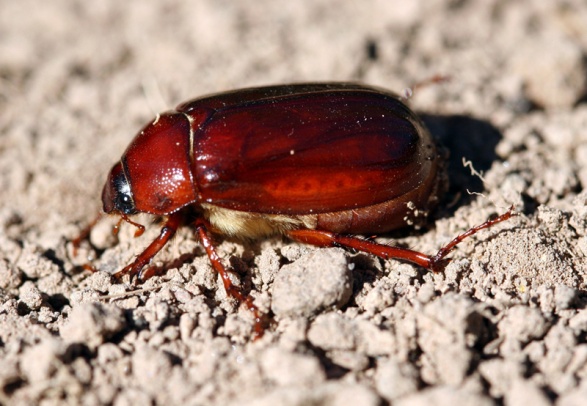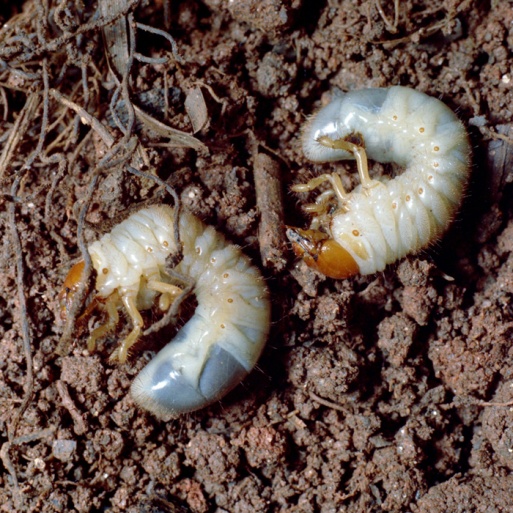
White grubs or June beetles
Phyllophaga spp.
(Insecta: Coleoptera: Scarabaeidae)
Over 100 species of Phyllophaga are known. Adult June beetles vary in length from 12 to 25 mm and in color from yellow to reddish brown to black. Eggs are spherical, 1.5 to 3.0 mm in diameter, and shiny white. Larvae, or grubs, vary in length from 20 to 45 mm. They are white and C-shaped with a brown head and three pairs of tan legs. Pupae are 20 to 24 mm long and may be white, light yellow, or brown.
Completion of the life cycle can take between one and four years, most commonly three. Adults feed on tree foliage, but females deposit eggs up to 20 cm deep into the soil nearby suitable larval habitats. After three weeks, hatching larvae begin to feed on roots and decaying organic matter. They overwinter in deeper soil layers until they begin feeding again the following spring. Pupation occurs after one or two feeding seasons. Adults remain in the soil to overwinter and emerge in May or June.
White grub species generally are distributed throughout Canada and the United States, but individual species have a relatively restricted range.
White grubs feed on roots of numerous cultivated field, fruit, and vegetable crops as well as pasture grasses, lawns, and nursery plantings. Adults feed on foliage of forest and shade trees.
Images
To
save the Web-optimized images shown below to your hard drive:
PC users: right click to "Save Picture (or Image) As..."
Mac users: click and drag to your desktop.

Adult of white grub or June beetle, Phyllophaga sp.
(Photographer: Steven Katovich, USDA Forest Service, Bugwood.org, with permission 2013-09-12)

Larvae of white grub, Phyllophaga sp.
(Photographer: Clemson University - USDA Cooperative Extension Slide Series, Bugwood.org, with permission 2013-09-12)